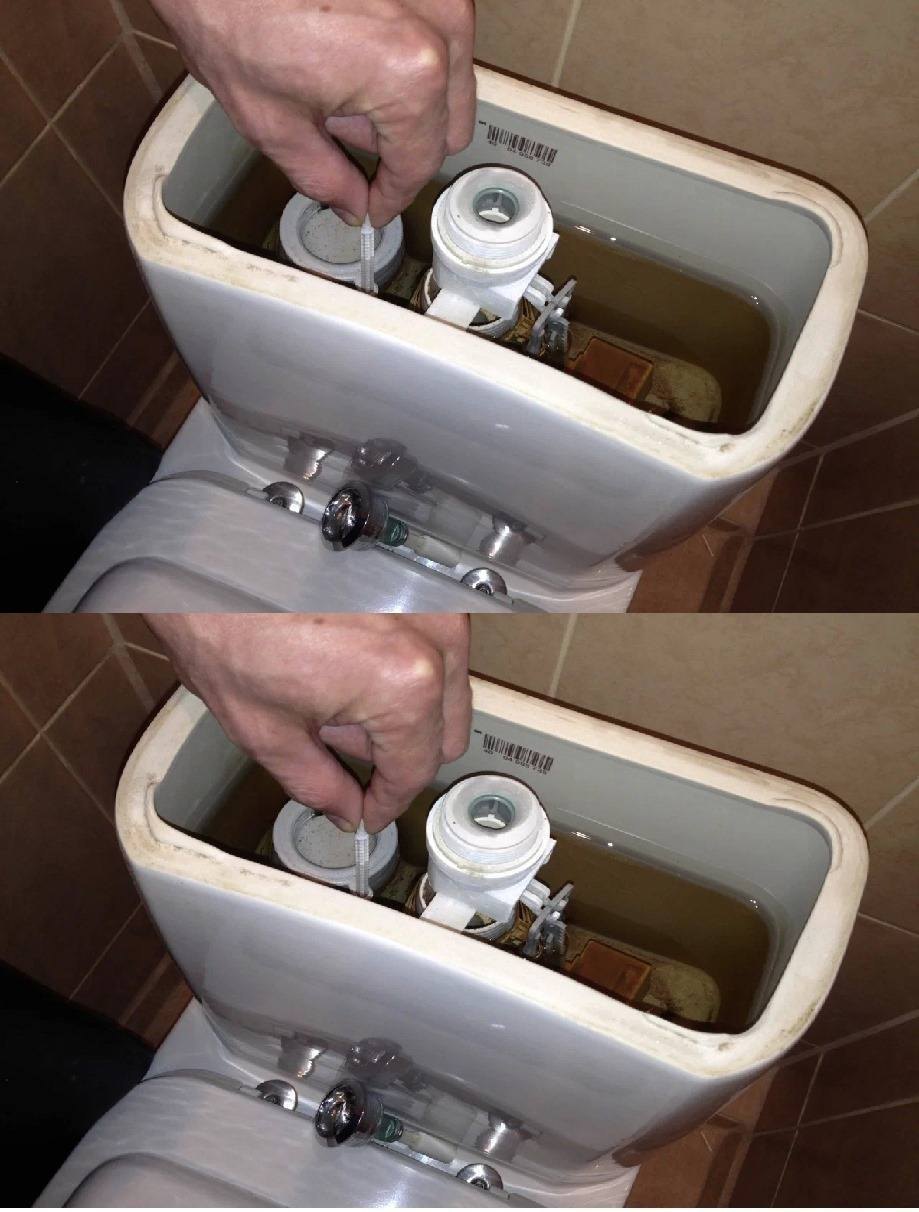ADVERTISEMENT
- Turn Off the Water Supply:
- Start by turning off the water supply to your toilet. Look for the shut-off valve located behind the toilet near the wall. Turn it clockwise to stop the water flow. This is an important step to avoid any flooding or spills while you’re working.
- Check the Flapper Valve:
- Lift the tank lid and inspect the flapper valve (the rubber piece that covers the flush valve). Over time, this valve can become worn, warped, or covered in mineral deposits, preventing it from sealing properly.
- If the flapper is damaged or doesn’t sit flush, it’s time to replace it. You can buy a new flapper valve at any hardware store. Simply remove the old flapper, attach the new one to the flush valve, and make sure it closes tightly when in place.
- Inspect the Fill Valve:
- Next, check the fill valve, which is responsible for refilling the tank after a flush. If the fill valve is old or faulty, it might be causing the tank to overfill, triggering the running water issue.
- Adjust the height of the float: If the water level is too high and spilling into the overflow tube, use the adjustment screw or clip on the fill valve to lower the float to the correct level. The water should stop about 1 inch below the top of the overflow tube.
- If adjusting the float doesn’t solve the issue, you may need to replace the fill valve. This is a relatively easy process: disconnect the water supply, unscrew the old fill valve, and install a new one in its place. Be sure to follow the manufacturer’s instructions for proper installation.
- Test for Leaks:
- After replacing or adjusting the flapper and fill valve, turn the water supply back on and let the tank fill up. Check for any leaks around the flapper or the fill valve connections. If everything looks good and there’s no water running, you’ve solved the issue!
- Final Adjustments:
- If you’re still hearing the toilet run or if water is overflowing, make sure the float is properly set and the fill valve is functioning correctly. You can also check the flush valve and ensure that the tank is properly sealed.
- Clean Up:
- Once you’re done, dry any excess water with a towel and replace the tank lid. Your toilet should now be functioning properly, with no more running water!
Why This Method Works
This simple method works because it addresses the most common causes of a running toilet. By replacing the flapper, adjusting the fill valve, or addressing any float issues, you’re ensuring that the toilet’s internal mechanisms function properly. Proper sealing and correct water levels prevent the toilet from running unnecessarily, saving both water and money on your next utility bill.
For Complete Cooking STEPS Please Head On Over To Next Page Or Open button (>) and don’t forget to SHARE with your Facebook friends
Additional Tips from the Pros
- Regular Maintenance: Even if your toilet is currently working fine, it’s a good idea to check the flapper and fill valve once a year to make sure everything is functioning properly. This can help you avoid future issues and extend the life of your toilet.
- Use the Right Parts: When replacing any parts, be sure to purchase the correct flapper or fill valve that’s compatible with your toilet model. Most hardware stores have a variety of universal options, but it’s always best to check your toilet’s manufacturer’s guidelines for the best fit.
- Preventative Measures: If you have hard water, minerals can build up inside the tank, causing wear and tear on parts like the flapper and fill valve. Consider using a water softener or cleaning the tank periodically with a vinegar solution to remove mineral deposits and extend the life of your toilet.
Conclusion
Dealing with a toilet that constantly runs can be frustrating and costly, but with the simple method shared by experienced plumbers, you can solve the issue quickly and easily. By checking the flapper, adjusting the fill valve, and making sure the float is properly set, you can restore your toilet to working order and avoid unnecessary water wastage.
Not only will you eliminate the annoying sound of running water, but you’ll also save money on your water bill. So, next time your toilet won’t stop running, remember that a simple fix is just a few steps away—no need to call in a plumber! Happy fixing!
